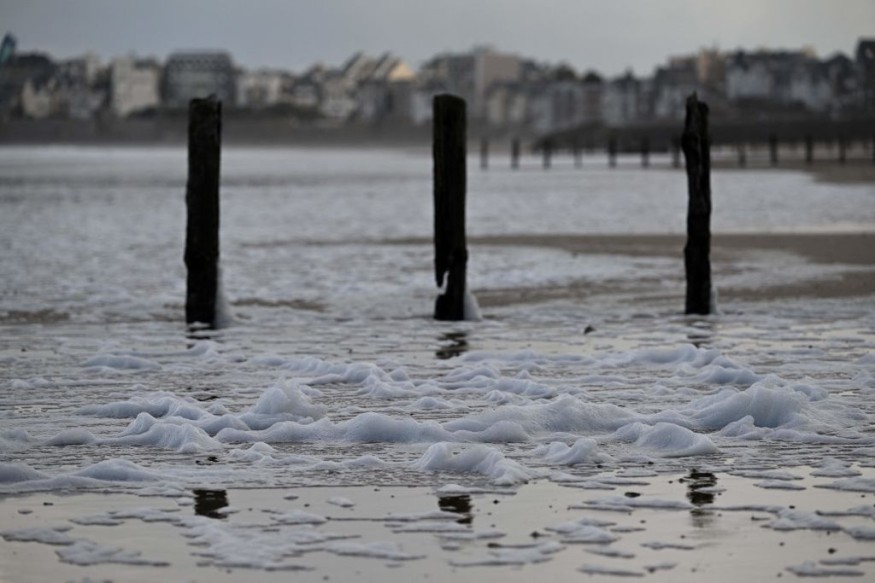
The Dutch authorities issued a warning to the public to stop kids and pets from consuming foam at the seaside after a study revealed that "forever chemicals" were concentrated in the spume.
PFAS Compound
The Dutch public health institute RIVM measured the coast in Zeeland, north and south Holland, in April and August following research into foam at the Belgian seaside that revealed a concentration of per- and polyfluoroalkyl substances (PFAS), which are widely used for their waterproofing qualities but difficult to destroy.
While not as significant as the "extremely high concentrations" found in one sample from the Belgian resort of Knokke, it was found that sea foam from well-known Dutch resorts like Egmond, Katwijk, Scheveningen, Texel, and Zandvoort had PFAS levels that were comparable to those found in Belgium.
Sea foam arises naturally when algae die in the sea, but it can also be created by water pollution. Particularly when there is wind. Because PFAS is concentrated in sea foam, sea foam contains far more PFAS than saltwater.
Synthetic PFAS compounds have been connected to hazardous effects on the human immune system, some malignancies, reproduction problems, and animal threats.
"The RIVM has previously established that people in the Netherlands are already too exposed to PFAS. A large amount comes from food and drinking water. Every route through which people ingest more PFAS is undesirable, including via sea foam," said minister of water management Mark Harbers.
Unclear Presence Of Chemicals
It is uncertain what PFAS concentrations in sea foam mean for the health of swimmers, surfers, and beach walkers. This is due to a paucity of data on how much sea foam people consume during various activities in the sea or along the beach.
There are no defined scenarios for determining exposure to sea foam, and there are no risk thresholds for PFAS in saltwater or sea foam.
Furthermore, the number of available measurements does not yet provide a good picture of how much PFAS is normally found in sea foam.
The provinces had sea foam samples taken twice, at 14 different points along the Dutch coast. However, there was not always enough sea foam available.
The Dutch investigation discovered "just as much if not more PFAS occur in Dutch sea foam as have been measured in Flemish sea foam, with the exception of one sample from Knokke in which very high PFAS concentrations were found."
PFAS are found in a wide range of products, from waterproof apparel and cosmetics to firefighting foam and pizza boxes. Some are prohibited, but there are environmental issues because the carbon-fluorine linkages that make the compounds valuable also resist destruction.
It was disclosed that 17 of England's 18 water providers discovered them in drinking water sources, including the widely prohibited chemical PFOS in raw, untreated water at 18 times the drinking water limit.
According to the RIVM, the Dutch government revised PFAS drinking water standards last year after they were discovered to be "more dangerous for health than previously thought."
Related Article : UN Human Rights Expert Alarm Over Pollution From A Manufacturing Plant in North Carolina
© 2025 NatureWorldNews.com All rights reserved. Do not reproduce without permission.





